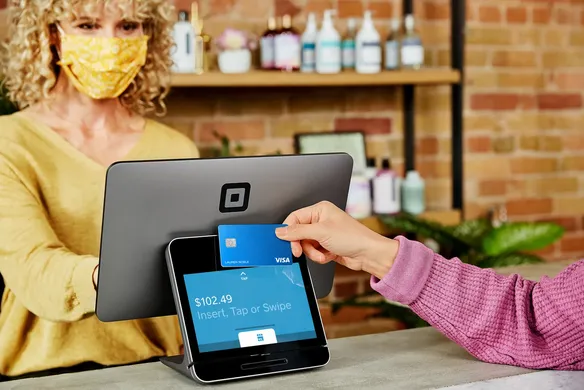Table of contents
This article is for educational purposes and does not constitute legal, financial, or tax advice. For specific advice applicable to your business, please contact a professional.
According to the Reserve Bank of Australia (RBA), there are almost 16 million credit cards in Australia – that’s one credit card for every adult. With so many consumers using credit cards to make purchases, business owners can prepare themselves to meet those needs by looking into providing merchant services.
What are merchant services?
Merchant services include everything, from hardware to software, that is needed for businesses to accept and process credit or debit card payments for both in-store and online sales.
A merchant account is a type of bank account that lets businesses accept payments by debit or credit card. The merchant account acts as an agreement between your business, a merchant bank, and a payment processor. Once you establish an account, the payments processor works with the issuing and acquiring bank to process that payment. A merchant services provider is an entity that allows you to accept payments by credit card, debit card, or wireless transfer.
Consider some of these merchant service tools
Understanding the different types of merchant services can help you determine which pay solutions are right for your business. Here are a few merchant services to consider:
Credit card processing
Debit and credit card processing products allow you to accept card transaction payments from customers. There may be different annual/monthly fees depending on the method of processing and credit card merchant services. Here’s how it works:
- A customer will pay and conduct a card transaction on a credit or debit card.
- The card is swiped through or keyed into a payment terminal. The terminal sends the card information to the credit card processing company.
- The card is authorised.
- The credit card payment processing company sends the payment to your bank.
- Your bank deposits the payment into your bank account.
Point-of-sale solution
A point-of-sale system is a hardware and software that enables your business to make sales when customers check out online or walk up to your counter to make a purchase. A point-of-sale system can allow you to accept payments, track sales, manage your employees, offer a loyalty program, and more (different systems have different features). Unlike traditional registers, POS systems have hardware and software components. These features help business owners be more efficient by combining many capabilities in one central place.
Virtual terminal
Virtual terminals are virtual representations of credit card terminals. They let you accept transactions using a computer rather than a physical card reader. With a virtual terminal, you can charge customers, itemise sales, and create one-time or recurring payments. While any business can use a virtual terminal, some may choose it over other options. Here are a few examples:
Restaurants that take phone orders and curbside deliveries
- Creative professionals, such as graphic designers or photographers, that work remotely
- Professional services like doctors or CPAs that bill over the phone
- An auto repair shop that may take payments over the phone and have a vehicle ready later for pickup
The flexibility of not always meeting face to face makes a virtual terminal advantageous if you don’t need as much physical hardware.
Gift card and loyalty programs
Gift cards and loyalty programs can increase customer retention and loyalty. With loyalty programs, you can incentivise customers by dollars spent, return visits or purchase of specific items. Gift cards can be used to attract new customers, increase sales, or deepen customer loyalty. According to the Gift Cards in the Australian Market Report, the Australian gift card market is valued at between $1.5 billion and $2.5 billion annually.
Bulk Electronic Clearing System (BECS)
In Australia we have BECS– a financial network used for electronic payments. Sellers using BECS can transfer money from one bank account to another. BECS payments are most commonly a substitute for cheques, but can also be used in the place of wire transfers, cash, or credit card networks.
Using merchant services can allow you to expand your customer base beyond cash and cheque buyers for small businesses and above. By processing payments electronically, customers have the opportunity to shop online or in-store, and payments are received more quickly than cash, or mailed invoices.
![]()











